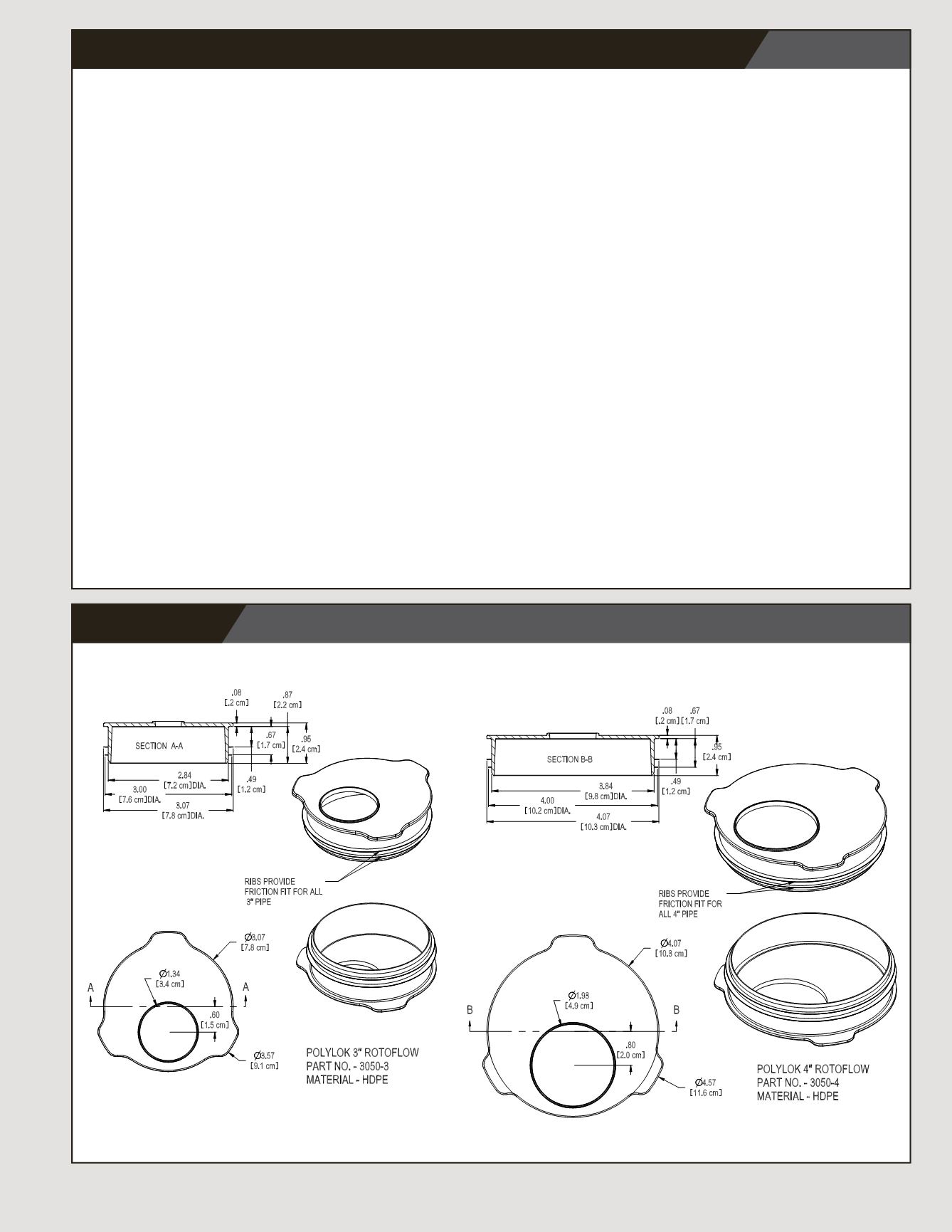

1-877-765-9565
WWW.POLYLOK.COM141
INSTALLATION IN SOIL OR NON-TRAFFIC LOAD BEARING APPLICATIONS
ROTO-FLOWS
A trench drain design and layout should be prepared prior to
installation. Include discharge outlets in design. Trench drains
should pitch away 1” per 20 feet from a building. Polylok trench
channels accept leveling blocks to aid in installation, or rebar can
be installed and wire-tied to aid in leveling the channel. Tees
and 90º accessory fittings are available.
1. Clear the area of all debris where the trench is to be installed.
2. Set-up the area with grade stakes and lines for grade control.
3. Excavate the trench area two inches deeper than trench depth.
4. Make trench width wide enough to accept and align trench drain.
5. Install a sand base in trench channel and level; do not use
excavated soil.
6. Check leveling and alignment of trench sections to ensure
grate is at grade.
7. Install grates and connect the trench sections to required
distance.
8. Trench sections may require removal of some installed screws
to lift grate to connect the trench sections together. Re-install
screws.
9. Install trench end cap and outlet cap to the discharge outlet
pipe. If discharging from bottom, use two end caps.
10. The trench grate should be covered with tape to seal out any
sand before the final fill to stabilize the trench.
11. There are several final fill materials that can be used to seal
in the sides and ends of trench drains. Some materials have trade
names, but many common filler materials can be used in this
application. Interlocking shaped sizes that can be compacted
down and stabilize the trench drain in position, such as crushed
stone, is ideal. Do not use excavated soil.
12. After final trench leveling and backfilling, remove tape from
the grate and ensure screws and grates are tightly secured.
Note: The above instructions are for non load-bearing applications
and will not accept vehicle loads and are for drainage only
applications. Additional instructions for H-20 load applications
are also availble.
Note: These instructions are for installers who are familiar with
excavation techniques and have experience with installations of
these or similar products.


















